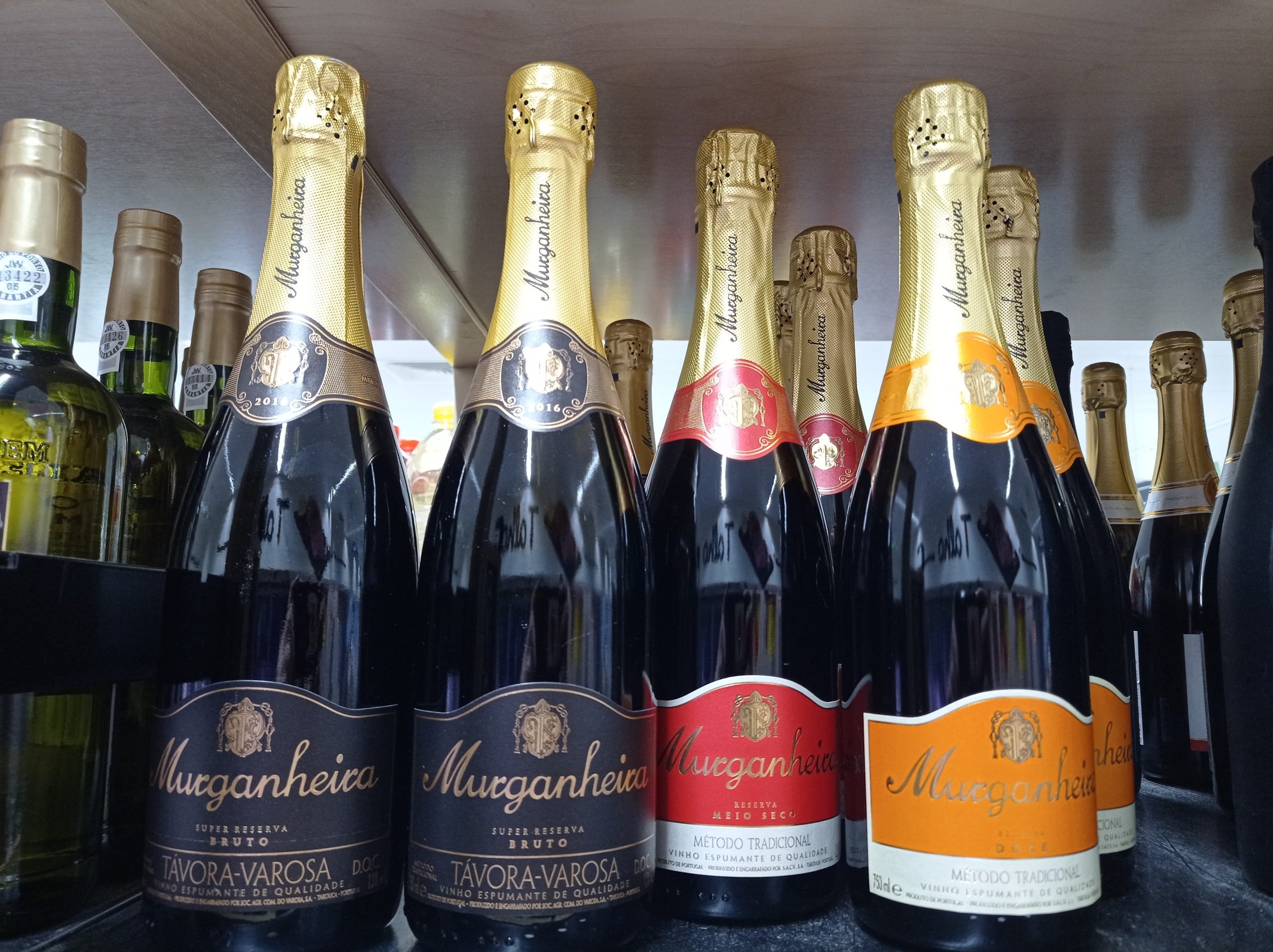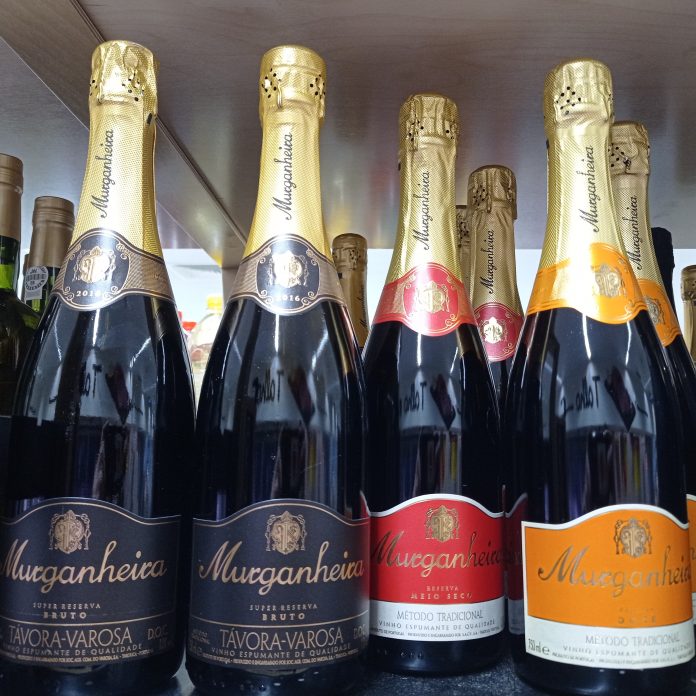
The wine region of Távora-Varosa is a very peculiar region in Portugal, being the first demarcated region of sparkling wine.
This very interesting region is placed near the hills of the Serra da Nave Mountain, between the rivers of Paiva and Távora, and (in wine region terms) south of the DOC (‘Denominação de Origem Controlada’ – Controlled Origin Denomination) Douro and north of the DOC Dão, in the Beiras region of Portugal.
This is the smallest DOC in the country and it was created in 1989, connecting the two regions of Varosa IPR and Encostas da Neve IPR. This last one produces wines more similar to the Douro region ones.
Besides being considered a DOC, it also has the ‘Indicação Geográfica Terras de Cister’, a geographical indication. The ‘Comissão Vinícola Regional (CVR) de Távora–Varosa’ (Regional Wine Commission of Távora-Varosa) is responsible for assuring that the wines fill the requirements of the DOC, with the quality and authenticity that this region has.
History of Távora-Varosa Wine
This region has been, like the rest of Portugal, populated by various peoples, from the indigenous Iberians, to the Romans, Suevi, and the Visigoth.
The wine production in this region goes back to the 17th century, to the year 1678, when the monks of Cister started to produce it. Funnily enough, another branch of this religious order, the Trapists, settled in what is now Belgium, was dedicated to the production of another alcoholic beverage, now known as “Beer”.
These monks built some of the most beautiful Monasteries, like the St. John of Tarouca Monastery, the first Cietern Monastery in the Iberian Peninsula, in the 12th century.
This small wine region is really important to the production of sparkling wine in Portugal, even though it also produces fresh white wines and smooth red wines.
The Region of Távora-Varosa
The Távora-Varosa region is, as said before, in between mountains, stretching until the south of the Douro and between the two rivers of Paiva and Távora.
The characteristics of the soil are granitic with sandy and clay properties, poor in limestone and sometimes with schist, having a low capacity to retain water. This allows for the production of fresh wines with high acidity, perfect for making sparkling wines.
The vineyards are planted at an altitude of around 550 meters, with the planting season being of around 8 months, between March and November.
The climate is usually hot and dry in the summer (reaching temperatures of more than 30ºC), while winters are harsh and humid.
For a vineyard to have the right to bear the seal DOC Távora-Varosa, they have to have at least 4 years of grafting and a maximum yield per hectare of 80 hl for red wines, and 80 hl for white and rosé wines. Their production should happen inside the delimited region, in registered wineries, and must be approved to have the seal. The CVR Távora-Varosa is ensured with controlling all of this.
Even though the main production is that of sparkling wines, it is also allowed the creation of still wines.
Types of Grapes and Wine in Távora-Varosa
As we’ve seen so far, most of the region’s wines are sparkling. This is not the only region in Portugal that produces these wines, but it is one of the regions of excellence for the real connoisseurs. However, very interesting White and Red wines are also produced.
Sparkling Wines
- It can come in a citrine, ruby, or red color
- Fruity, fresh, and balanced wines
- The best ones are elegant and with a good acidity
- The best choice to freshen up your summer and to go with fish, seafood, and seasoned salads
Red Wines
- Light ruby colors, with a reddish tone.
- Delicate, light, and smooth wines, a little fresh, and getting excellent aromas with time.
- Common Grape Types: Alvarelhão, Aragonês, Pinot Tinto, Tinta da Barca, Tinta Barroca, Touriga Francesa e Touriga Nacional
White Wines
- Citrine color, with a taste that ranges from really fruity to citrus taste
- It highlights the primary aromas, being very fresh
- Its natural acidity, intense aroma, and citrus, bright and fresh character, allow for the enhancement of its quality
- Common Grape Types: Bical, Chardonnay, Cerceal, Dona Branca, Fernão Pires, Folgasão, Gouveio, Malvasia Fina, Malvasia Rei e Pinot Branco
If a wine is created in the region with another grape type that is not allowed (not only the ones we mentioned, these were just the most common ones), is made outside of the specific DOC geographical zone, or use other winemaking techniques, it cannot have the DOC seal. It will have the ‘Indicação Geográfica Terras de Cister’ seal instead.
Winemaking Process in Távora-Varosa
The sparkling wines made in this DOC region should be made in the traditional method, with a minimum stage of 9 months in a bottle. For the wines that want to use the DOC seal, it is authorized to use the must from the first three pressings.
The fertilization of the soils is usually chemical, with compound fertilizers. They try to achieve a traditional form in terms of organic matter of the soil, therefore not using too much nitrogen fertilizers.
Just like in the Champagne region of France, in Távora-Varosa it is also authorized the use of the “Vin de Réserve” (Stock Wine or ‘Lotação’, in Portuguese) in non-vintage sparkling wines. This is, use wines made from previous crops to homogenize the current one.
After getting the stock wine (if this is the method of interest) and the tirage liqueur (a mix of sugar and yeast), the wine is bottled and stored in a basement with a controlled temperature and humidity, usually of around 12ºC and 90% humidity. This is when the second fermentation happens, which ends when the pressure on the bottles reaches around 6 bar.
The bubbly then remains in the bottle to get in contact with the lees for another period before the ‘dégorgement’. If the sparkling is a Reserve, then the stage time is of around 12 months; if it is a Super-Reserve or Extra-Reserve, then 24 months; and if it is an Old Reserve or Grand Reserve, it’s at least 36 months.
After this, the last processes happen:
- Rémuage: the periodic turning or shaking of the wine to move the sediment towards the cork. In some wineries, it is still done manually, but it has largely been mechanized.
- Dégorgement: the process when dead yeast deposits are removed and the cork is replaced, without losing too much of the wine or gas.
- Insertion of the expedition liquor
- Corking
Távora-Varosa Wine Suggestions: Best Wine in Távora-Varosa
Some of the most well-known and appreciated brands of this region are:
- Murganheira (one of the most awarded)
- Terras do Demo
- Hehn
- Casa de Vinhago
2 Best Wine Tours in Távora-Varosa
1. Oriolus Tour – Douro, Côa, Távora, Varosa – 4 Rivers
On this 7-day tour, you will explore 3 regions in the interior of Portugal. Witness the diverse and breathtaking landscapes, nature, people, culture, and food of the region. Besides including a trip to the Tavora-Varosa region, it takes you on a tour of the Monastery of St. John of Tarouca and to a wine farm. You are guaranteed to fall in love!
2. Demon Lands
A 3-day trip exclusively to the region of Távora-Varosa, which includes visits to numerous churches and Monasteries (including the one of St. John of Tarouca), as well as lots of historical villages, filled with culture! It also will take you on a visit to a winery in the region, where you will see how the sparkling wines here are made.


